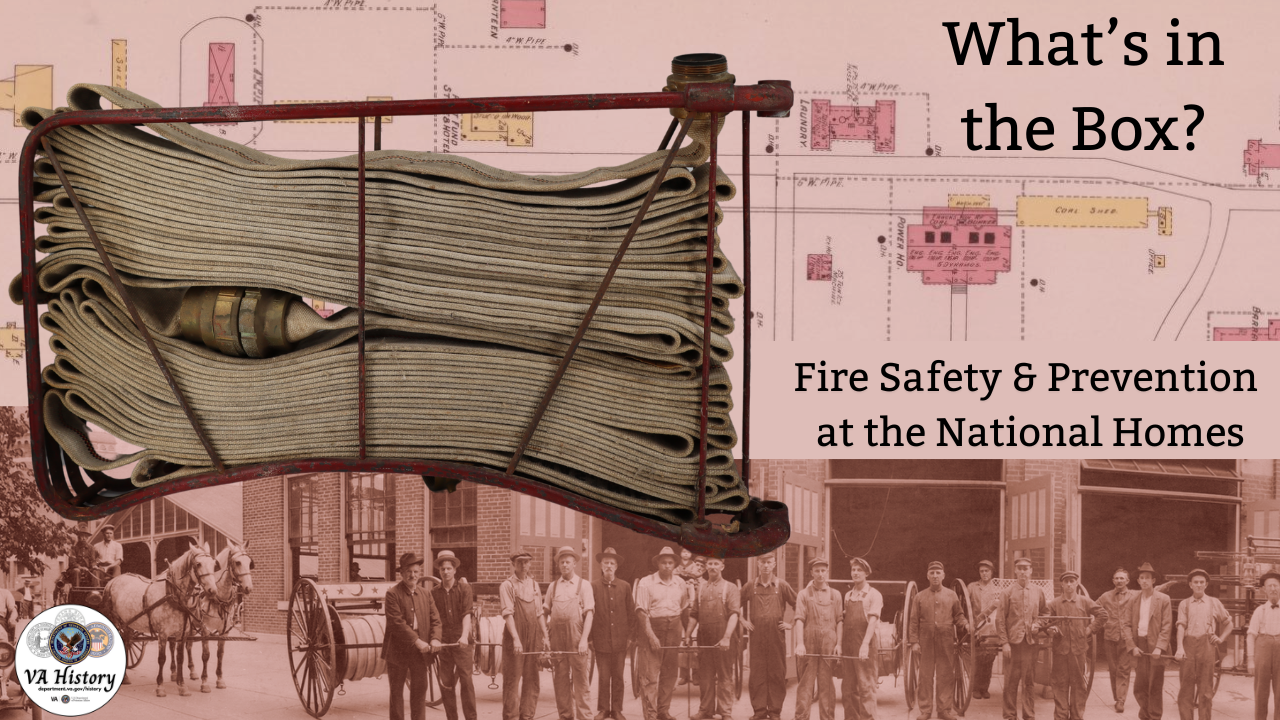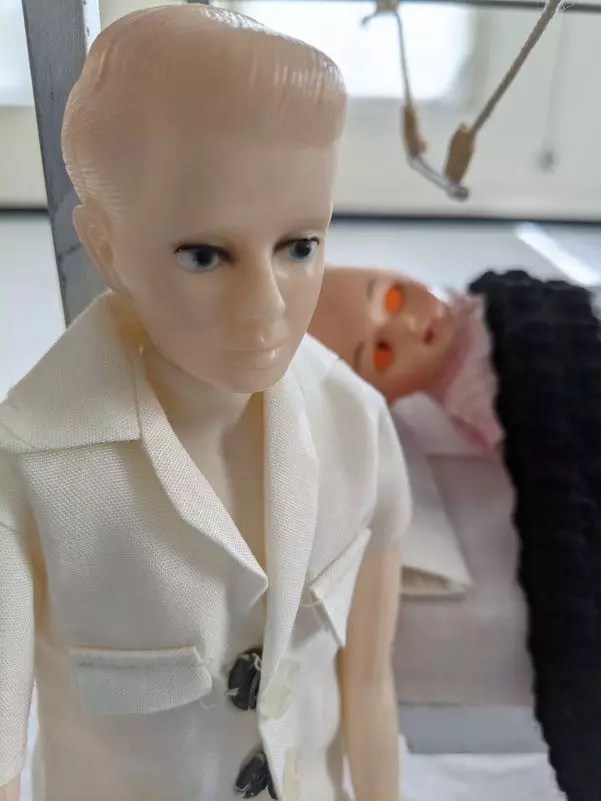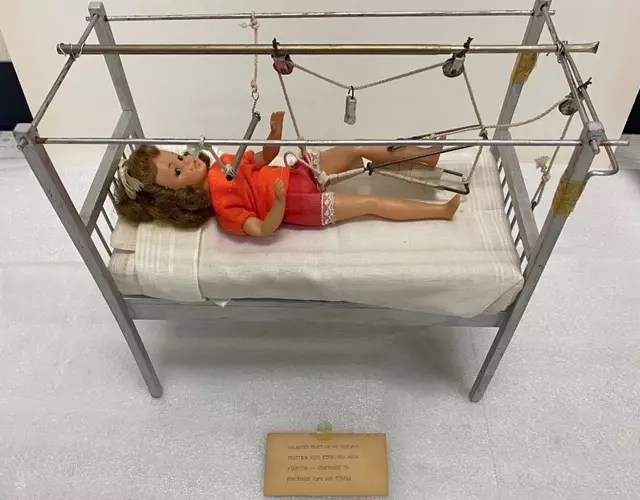In celebration of Halloween, how about we learn about some creepy dolls?
Welcome to the second edition of the Curator Corner. Happy Halloween! It’s the time of year when Childs Play is playing in a rotation with Halloween and Friday the 13th. I recently saw that USA Network was having a Chucky marathon. As a tribute to Chucky and all the dolls that make our hearts race, this edition of the Curator Corner features procedure dolls from the Mountain Home collection, a recently acquired group of early 20th century artifacts from Mountain Home VA Medical Center in eastern Tennessee. Some of these dolls are super creepy. Our graduate student intern, Amy Ackman, made them even more dreadful in the photo. This image deters the desire to work late in collection storage. Also, Amy may have an alternate career path in the horror film industry.
Some people are afraid of dolls (pediophobia), and others love them to the point of creating extensive collections. Regardless of your personal feelings about them, dolls serve a variety of essential roles as learning devices. Some people use dolls to simulate the experience of being a parent before jumping into the deep end. While not exactly a doll, instructors use manikins to show millions of people how to perform lifesaving CPR. They are also used to instruct first responders how to perform first aid. Medical professionals also use manikins to perfect their skills before working on living patients. One example is managing a patient’s airway to ensure the flow of oxygen while giving critical care.
The creepy doll contenders in our collection include 10 dolls, of varying sizes, complete with “accessories;” a bed, pulleys, ropes, and steel bars. If we didn’t know their purpose, these dolls might be considered part of a torture chamber. Fortunately, we know that these were procedure dolls, used to train Medical staff on various procedures for traction and fractures. The dolls clearly illustrate the part of the body that needs to be immobilized and the method. Each doll in the collection shows a different type of procedure.
We have been unable to find any resources that show these types of specific medical dolls were mass-produced. So, it seems likely that readily available dolls were used with custom-made furniture, hardware, and other materials to create these 3-dimensional representations of procedures that staff needed to study.
So, are the dolls still a little creepy? I believe they are, but they were also an essential part of medical care. Today medical professional use manikins and 3D prints to practice medical techniques. I don’t know about you, but I would rather have a new doctor or nurse practicing on an inanimate object instead of me.
For those of you uneasy around dolls, you can rest easy knowing that the dolls are locked up in collection storage at night.
By Kurt Senn
Curator, National VA History Center
Share this story
Related Stories

Curator Corner
The Story Behind the National Homes’ Seal
The National Home for Disabled Volunteer Soldiers turns 160 years old in 2025. The campuses are the oldest in the VA system, providing healthcare to Veterans to this day.
At the time of their establishment, they were the first of their type on this scale in the world. Within the NHDVS seal is the story that goes back 160 years ago.

Curator Corner
What’s in the Box? Fire Safety and Prevention at the National Homes
Fire safety may not be the first thing that comes to mind when thinking about Veteran care, but during the National Home for Disabled Volunteer Soldiers period (1865-1930), it was a critical concern. With campuses largely constructed of wooden-frame buildings, housing thousands of often elderly and disabled Veterans, the risk of fire was ever-present. Leaders of the National Homes were keenly aware of this danger, as reflected in their efforts to establish early fire safety protocols.
Throughout the late 19th century, the National Homes developed fire departments that were often staffed by Veteran residents, and the Central Branch in Dayton even had a steam fire engine. Maps from this era, produced by the Sanborn Map Company for fire insurance purposes, reveal detailed records of fire prevention equipment and strategies used at the Homes. These records provide us with a rare glimpse into evolving fire safety measures in the late 19th and early 20th Century, all part of a collective effort to ensure the well-being of the many Veterans living there.





